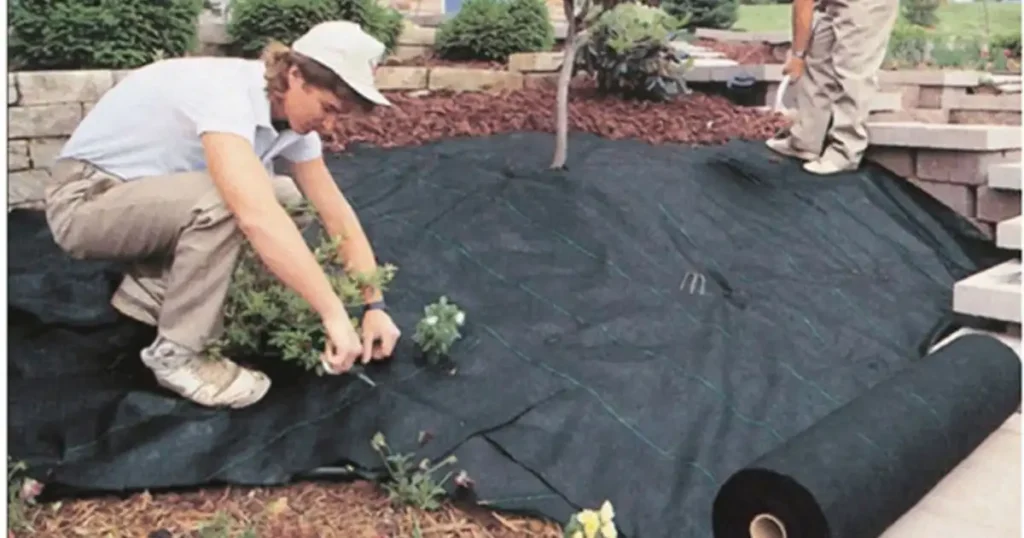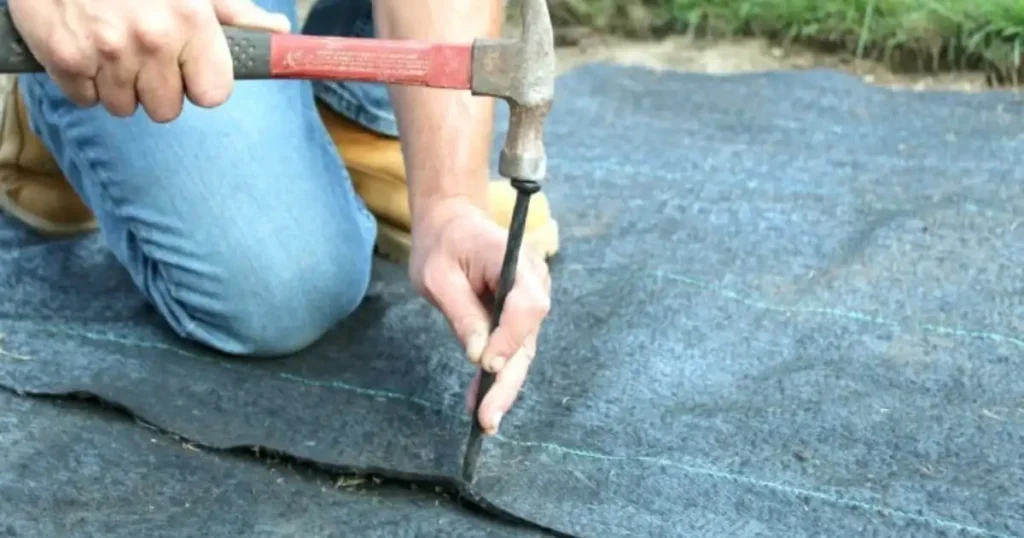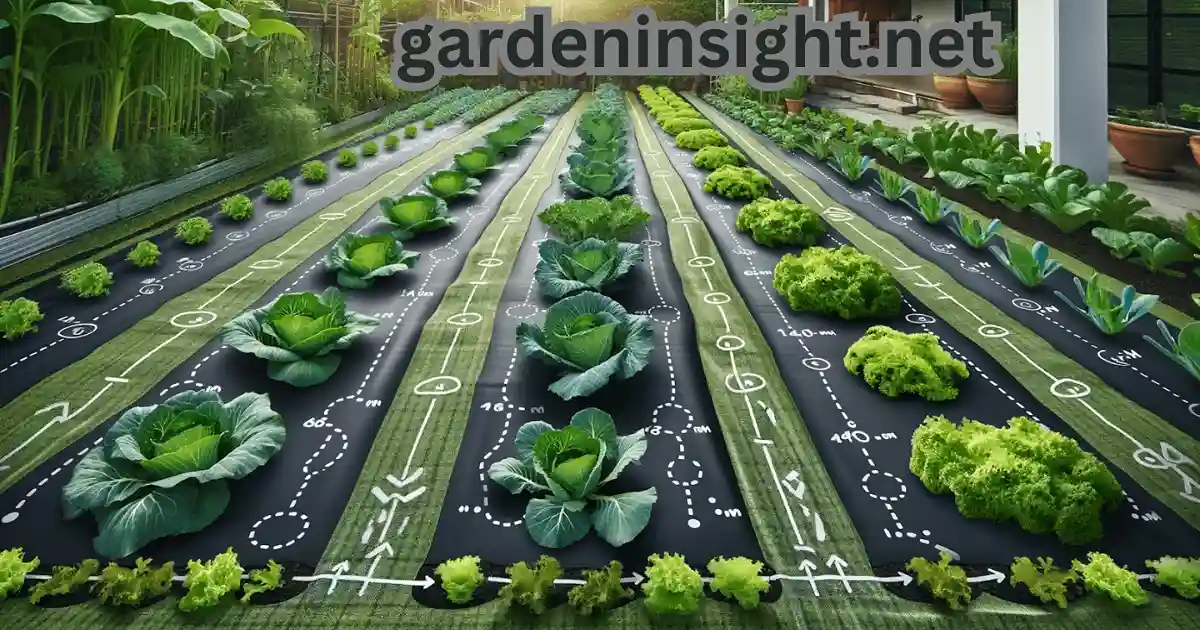Landscape fabric is a popular gardening tool designed to help control weeds while allowing water and air to pass through to the soil.
It’s a great way to reduce the time you spend weeding and keep your garden looking neat and tidy. But how do you use weed control fabric correctly?
This comprehensive guide will walk you through the process step-by-step, answer frequently asked questions, and provide tips for choosing the right type of fabric for your needs.
What is Landscape Fabric?

Landscape fabric, also known as weed barrier fabric, is a porous material, usually made from woven or non-woven polypropylene or polyester. It comes in rolls of varying widths and thicknesses.
- Woven fabrics: These have a tighter weave, making them more durable and longer-lasting. They are ideal for use under gravel pathways or driveways.
- Non-woven fabrics: These are lighter and more flexible, making them easier to use in garden beds. They are also more permeable to water and air.
Choosing the Right Landscape Fabric
What is the best weed control fabric to use? The best weed control fabric depends on your specific needs.
- For flower beds and gardens: Choose a non-woven fabric that allows for good water drainage and air circulation.
- For pathways and driveways: Opt for a woven fabric that can withstand heavy traffic and prevent gravel from sinking into the soil.
- For slopes and erosion control: Select a heavier, more durable fabric that can hold soil in place.
Consider factors like the type of plants you’re growing, the amount of weed pressure in your area, and your budget when selecting a weed control fabric.
What is the Best Landscape Fabric to Use?
Choosing the right landscape fabric depends on your project. Consider the following:
| Type of Fabric | Best Use | Pros | Cons |
|---|---|---|---|
| Woven Fabric | Garden beds, under rocks | Durable, allows water flow | Higher cost |
| Non-Woven Fabric | Pathways, driveways | Blocks weeds effectively | Limited water permeability |
| Spun-Bonded Fabric | Flower beds, decorative areas | Lightweight, easy to install | May tear easily under heavy use |
How to Use Weed Control Fabric

How do you install weed control fabric correctly? Follow these simple steps for proper installation:
- Prepare the Area: Clear the area of any existing weeds, rocks, and debris. Level the ground and ensure it’s free of sharp objects that could puncture the fabric.
- Lay Down the Fabric: Roll out the weed control fabric over the prepared area, overlapping the edges by at least 6 inches to prevent weeds from growing through the seams.
- Secure the Fabric: How to secure weed control fabric in place? Use landscape fabric staples or pins to secure the fabric to the ground, spacing them about every 12-18 inches along the edges and seams.
- Cut Openings for Plants: If you’re planting in the area, cut X-shaped openings in the fabric where you want to place your plants. Make the openings slightly larger than the root ball of the plant.
- Add Mulch: Cover the weed control fabric with a layer of mulch, such as wood chips or bark, to a depth of 2-3 inches. This helps to hold the fabric in place, retain moisture, and further suppress weeds.
Using Landscape Fabric in Different Applications
This section explores how to use weed control fabric in various garden settings:
- How to use landscape fabric in flower beds: Use a non-woven fabric and cut openings for each plant. This helps to keep the soil moist and suppress weeds around your flowers.
- How to use landscape fabric around existing plants: Carefully lay the fabric around the base of your plants, avoiding the stems and foliage. Secure the fabric with staples and cover with mulch.
- How to use landscape fabric with rocks: Install the fabric before adding decorative rocks to prevent them from sinking into the soil and to reduce weed growth.
- How to use landscape fabric in raised beds: Line the bottom of your raised bed with weed control fabric to prevent weeds from growing up through the soil.
- How to use landscape fabric in retaining wall: Place weed control fabric behind the retaining wall to improve drainage and prevent soil from washing through.
- How to use landscape fabric staples: Use a hammer or mallet to drive the staples through the fabric and into the ground, ensuring they are flush with the surface.
Benefits of Using Landscape Fabric

- Weed Control: Can weed control fabric prevent weeds? Landscape fabric acts as a barrier, preventing most weed seeds from germinating.
- Moisture Retention: The fabric helps to reduce evaporation, keeping the soil moist for longer periods.
- Improved Soil Health: By preventing weed growth, weed control fabric allows nutrients and water to reach your plants more effectively.
- Reduced Soil Erosion: Weed control fabric can help to stabilize the soil and prevent erosion, especially on slopes.
- Neat and Tidy Appearance: A layer of mulch over weed control fabric gives your garden a clean and well-maintained look.
Conclusion
Landscape fabric is a valuable tool for any gardener looking to reduce weeds and maintain a beautiful landscape.
By understanding the different types of fabric, choosing the right one for your needs, and following proper installation techniques, you can enjoy the benefits of landscape fabric for years to come.
Remember to select a fabric that allows for adequate water drainage, secure it properly with staples, and cover it with a layer of mulch for optimal results. With a little planning and effort, you can create a thriving, weed-free garden with the help of landscape fabric.
FAQs
Some of the frequently inquired questions regarding use of weed control fabric are as follow:
How long does landscape fabric last?
The lifespan of landscape fabric depends on the type of fabric and the environmental conditions. Non-woven fabrics typically last 3-5 years, while woven fabrics can last 10 years or more.
Does landscape fabric allow water to drain?
Yes, weed control fabric is designed to be permeable, allowing water to drain through to the soil. However, some fabrics are more permeable than others. Choose a fabric with good water drainage, especially for areas prone to heavy rainfall.
Is landscape fabric good for gardens?
Yes, landscape fabric can be beneficial for gardens by suppressing weeds, retaining moisture, and improving soil health. However, it’s important to choose the right type of fabric and install it correctly.
Can I use landscape fabric under my deck?
Yes, landscape fabric can be used under a deck to prevent weed growth and create a clean look. Choose a durable woven fabric and cover it with gravel or mulch.
How to Secure Landscape Fabric in Place?
Use landscape fabric staples, spacing them 12-18 inches apart, and cover the fabric with mulch or rocks for additional stability.
